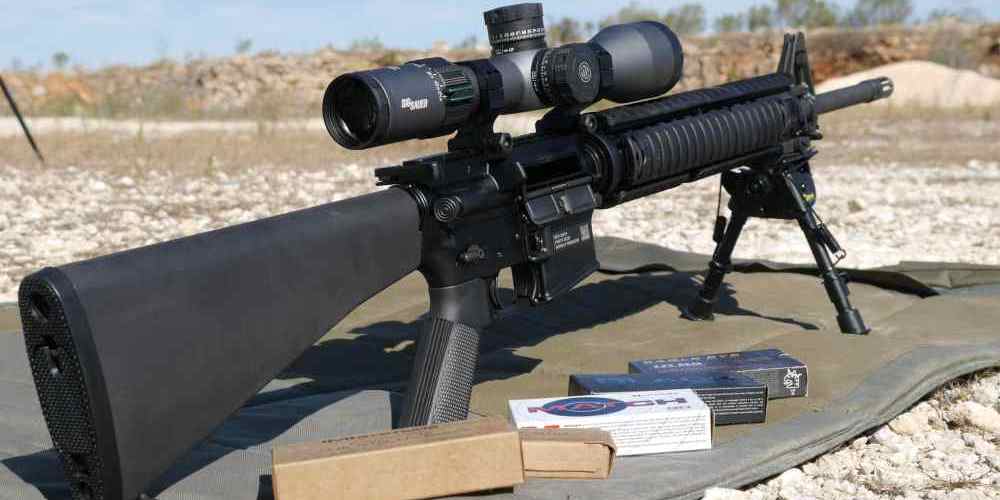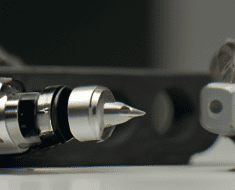“Navigate your AR15 warranty repairs with ease – know what’s covered and what’s not.”
Common AR15 Warranty Repair Issues
When it comes to owning an AR15 rifle, it’s important to understand the warranty coverage that comes with your purchase. While AR15 rifles are known for their durability and reliability, issues can still arise that may require warranty repairs. In this article, we will discuss some common AR15 warranty repair issues, what is typically covered under warranty, and what is not.
One of the most common issues that AR15 owners may encounter is a malfunctioning trigger. This can manifest as a trigger that fails to reset, a trigger that feels gritty or rough, or a trigger that fails to engage properly. In most cases, issues with the trigger mechanism are covered under warranty, as long as the rifle has not been modified in any way. If you experience problems with your trigger, it’s best to contact the manufacturer or retailer where you purchased the rifle to inquire about warranty repair options.
Another common issue that AR15 owners may face is a malfunctioning bolt carrier group. This can manifest as failure to extract or eject spent casings, failure to feed new rounds into the chamber, or failure to lock back on an empty magazine. Issues with the bolt carrier group are typically covered under warranty, as long as the rifle has not been modified or abused. If you experience problems with your bolt carrier group, it’s best to contact the manufacturer or retailer for warranty repair options.
One issue that is not typically covered under warranty is damage caused by improper maintenance or cleaning. AR15 rifles require regular cleaning and maintenance to function properly, and failure to do so can result in damage to the rifle. If you experience issues with your AR15 that are caused by improper maintenance or cleaning, you may be responsible for the cost of repairs. It’s important to follow the manufacturer’s guidelines for cleaning and maintenance to avoid voiding your warranty.
Another issue that may not be covered under warranty is damage caused by using improper or low-quality ammunition. AR15 rifles are designed to function with specific types of ammunition, and using the wrong type of ammo can cause damage to the rifle. If you experience issues with your AR15 that are caused by using improper ammunition, you may be responsible for the cost of repairs. It’s important to use high-quality, factory-made ammunition that is designed for use in AR15 rifles to avoid voiding your warranty.
In conclusion, understanding the warranty coverage that comes with your AR15 rifle is essential for navigating warranty repair issues. While many common issues are covered under warranty, it’s important to follow the manufacturer’s guidelines for maintenance and use proper ammunition to avoid voiding your warranty. If you experience issues with your AR15, it’s best to contact the manufacturer or retailer for warranty repair options. By taking proper care of your AR15 rifle and following the manufacturer’s guidelines, you can ensure that your rifle remains in top working condition for years to come.
Understanding AR15 Warranty Coverage
When it comes to purchasing a new AR15 rifle, one of the most important factors to consider is the warranty coverage that comes with it. Understanding what is covered under the warranty and what is not can save you time, money, and frustration in the long run. In this article, we will explore the ins and outs of AR15 warranty repairs, so you can navigate the process with confidence.
First and foremost, it is crucial to carefully read and understand the warranty information provided by the manufacturer. Most AR15 rifles come with a limited warranty that covers defects in materials and workmanship for a specific period of time. This means that if your rifle malfunctions due to a manufacturing defect, the manufacturer will repair or replace it at no cost to you. However, it is important to note that this warranty does not cover normal wear and tear, misuse, or modifications made to the rifle.

If you encounter an issue with your AR15 rifle that you believe is covered under the warranty, the first step is to contact the manufacturer or authorized dealer where you purchased the rifle. They will provide you with instructions on how to proceed with the warranty repair process. In most cases, you will be required to ship the rifle to a designated repair facility, where a trained technician will assess the issue and determine the best course of action.
It is important to keep in mind that warranty repairs can take time, so it is essential to be patient throughout the process. The repair facility will work diligently to diagnose and fix the issue with your rifle, but it may take several weeks for the repair to be completed. In some cases, the manufacturer may even replace your rifle with a new one if the issue cannot be resolved.
While most manufacturing defects are covered under the warranty, there are some instances where repairs may not be covered. For example, if your rifle has been modified in any way, such as adding aftermarket parts or accessories, the warranty may be voided. Additionally, if the issue with your rifle is determined to be caused by misuse or neglect, you may be responsible for the cost of the repair.
To avoid any confusion or misunderstandings regarding warranty coverage, it is recommended to keep detailed records of any modifications made to your AR15 rifle, as well as any maintenance or cleaning performed. This information can be helpful in determining whether the issue with your rifle is covered under the warranty.
In conclusion, navigating AR15 warranty repairs can be a straightforward process if you understand what is covered and what is not. By familiarizing yourself with the warranty information provided by the manufacturer and following the proper procedures for submitting a warranty claim, you can ensure that your rifle is repaired or replaced in a timely manner. Remember to keep detailed records of any modifications or maintenance performed on your rifle to avoid any potential issues with warranty coverage. With a little patience and diligence, you can have your AR15 rifle back in working order in no time.
Tips for Navigating AR15 Warranty Repairs
Navigating AR15 warranty repairs can be a daunting task for gun owners. Understanding what is covered and what is not under the warranty can save you time and frustration when dealing with repairs. In this article, we will discuss some tips for navigating AR15 warranty repairs to help you get your firearm back in working order as quickly as possible.
First and foremost, it is important to familiarize yourself with the terms of your AR15 warranty. Most manufacturers offer a limited warranty that covers defects in materials and workmanship for a certain period of time. This means that if your firearm malfunctions due to a manufacturing defect, the manufacturer will repair or replace it free of charge. However, it is important to note that warranties typically do not cover normal wear and tear, misuse, or modifications made to the firearm.
When you encounter an issue with your AR15 that you believe is covered under the warranty, the first step is to contact the manufacturer or authorized dealer. They will provide you with instructions on how to proceed with the repair process. In some cases, they may ask you to ship the firearm to their facility for evaluation and repair. It is important to follow their instructions carefully to ensure that your warranty remains valid.
Before sending your AR15 in for repair, it is a good idea to document the issue you are experiencing. Take detailed notes on when the problem started, how often it occurs, and any other relevant information. This will help the manufacturer or authorized dealer diagnose the issue more quickly and accurately. Additionally, take photos of the firearm and any damaged or malfunctioning parts to include with your repair request.
Once your AR15 is in the hands of the manufacturer or authorized dealer, be patient. Repairs can take time, especially if the issue is complex or requires special parts. However, most manufacturers strive to complete repairs as quickly as possible to minimize downtime for their customers. If you have not heard back about the status of your repair within a reasonable amount of time, do not hesitate to follow up with the manufacturer or authorized dealer for an update.
When your AR15 is returned to you after repair, inspect it carefully before using it again. Make sure that the issue has been resolved and that all parts are functioning properly. If you notice any new issues or problems with the repair, contact the manufacturer or authorized dealer immediately to address them. It is important to test fire the firearm in a safe and controlled environment to ensure that it is functioning correctly before using it for any other purposes.
In conclusion, navigating AR15 warranty repairs can be a straightforward process if you understand what is covered and what is not under the warranty. By familiarizing yourself with the terms of your warranty, documenting the issue, and following the manufacturer’s instructions, you can get your firearm back in working order quickly and efficiently. Remember to inspect the firearm carefully after repair and test fire it before using it for any other purposes. If you encounter any issues with the repair, do not hesitate to contact the manufacturer or authorized dealer for assistance.
How to Properly Document AR15 Warranty Repairs
Navigating AR15 Warranty Repairs: What’s Covered and What’s Not
When it comes to owning an AR15, it’s important to understand the warranty coverage that comes with your firearm. While AR15s are known for their durability and reliability, there may come a time when you need to have your rifle repaired under warranty. Knowing what is covered and what is not can save you time and frustration when dealing with warranty repairs.
First and foremost, it’s crucial to properly document any issues you may encounter with your AR15. This documentation will be essential when submitting a warranty claim to the manufacturer. Be sure to keep detailed records of when the issue first occurred, any troubleshooting steps you have taken, and any communication you have had with the manufacturer or their authorized repair center.
When submitting a warranty claim for your AR15, it’s important to understand what is covered under the manufacturer’s warranty. Most warranties will cover defects in materials and workmanship for a specified period of time. This means that if your AR15 experiences a malfunction due to a manufacturing defect, the manufacturer will repair or replace the affected parts at no cost to you.
However, it’s important to note that not all issues will be covered under the manufacturer’s warranty. Damage caused by misuse, neglect, or improper maintenance is typically not covered. This includes things like using improper ammunition, failing to clean and lubricate your AR15 regularly, or modifying the rifle in a way that voids the warranty.
To ensure that your warranty claim is processed quickly and efficiently, be sure to follow the manufacturer’s instructions for submitting a claim. This may include providing proof of purchase, completing a warranty registration form, and shipping the rifle to an authorized repair center for evaluation.
Once your AR15 is in the hands of the manufacturer or their authorized repair center, be patient and allow them time to diagnose and repair the issue. Depending on the nature of the problem, repairs may take anywhere from a few days to several weeks to complete. Keep in mind that the manufacturer’s goal is to get your rifle back to you in proper working order as quickly as possible.
After your AR15 has been repaired under warranty, be sure to test fire the rifle to ensure that the issue has been resolved. If you continue to experience problems, contact the manufacturer immediately to discuss further repairs or replacement options.
In conclusion, properly documenting AR15 warranty repairs is essential for a smooth and efficient claims process. Understanding what is covered under the manufacturer’s warranty and what is not will help you avoid any surprises when submitting a claim. By following the manufacturer’s instructions and being patient throughout the repair process, you can ensure that your AR15 is back in working order in no time.
What to Do If Your AR15 Warranty Claim is Denied
Navigating AR15 Warranty Repairs: What’s Covered and What’s Not
If you’re a proud owner of an AR15 rifle, you know the importance of having a warranty to protect your investment. However, when it comes to warranty repairs, things can get a bit tricky. It’s essential to understand what is covered under your warranty and what is not, so you can navigate the process smoothly.
When it comes to AR15 warranty repairs, most manufacturers will cover defects in materials and workmanship. This means that if your rifle malfunctions due to a manufacturing error, the manufacturer will repair or replace the defective parts at no cost to you. However, it’s crucial to note that warranties typically do not cover normal wear and tear, misuse, or modifications made to the rifle.
If you find yourself in need of a warranty repair, the first step is to contact the manufacturer or the retailer where you purchased the rifle. They will guide you through the process of submitting a warranty claim and provide you with instructions on how to send in your rifle for repairs. It’s essential to follow their guidelines carefully to ensure that your claim is processed efficiently.
Once your rifle is received for repairs, the manufacturer will inspect it to determine the cause of the malfunction. If the issue is covered under the warranty, they will repair or replace the defective parts and return your rifle to you in working order. However, if the problem is not covered under the warranty, you may be responsible for the cost of repairs.
In some cases, your AR15 warranty claim may be denied. This can be frustrating, but there are steps you can take to address the issue. The first thing to do is to review the warranty terms and conditions to see if the denial is justified. If you believe that your claim was wrongfully denied, you can contact the manufacturer to discuss the matter further.
When contacting the manufacturer, be sure to provide them with any relevant information or documentation that supports your claim. This could include photos of the malfunctioning parts, receipts for any repairs or modifications made to the rifle, or any other evidence that may help prove your case. It’s essential to be polite and professional when communicating with the manufacturer to increase the chances of a favorable outcome.
If your AR15 warranty claim is still denied after speaking with the manufacturer, you may want to consider seeking legal advice. An attorney who specializes in consumer protection laws can help you understand your rights and options for pursuing a resolution. They can also assist you in filing a complaint with the appropriate regulatory agencies if necessary.
In conclusion, navigating AR15 warranty repairs can be a challenging process, but with the right knowledge and approach, you can ensure that your rifle is properly repaired. Understanding what is covered under your warranty, following the manufacturer’s guidelines for submitting a claim, and being proactive in addressing any denials are essential steps in protecting your investment. By taking these steps, you can enjoy peace of mind knowing that your AR15 is in good hands.






